Posted by: Ken @ 9:04 pm
This morning’s post is, of necessity, a patchwork of unrelated events. The past two weeks have been full of family fun, mostly unrelated to birding. Among other house guests, our two Illinois granddaughters (six and seven years old) arrived a few days before Christmas and departed New Year’s Eve. The girls slept in the “computer room,” actually our fourth bedroom that rarely serves the architect’s purpose. As a result, my computer face time has been limited to scanning e-mail titles and opening only those that appeared to require immediate action.
The children brought with them a cold virus that thankfully spared me until the morning after after Mary Lou and I sang in the Christmas Eve Choir. As usual it knocked me down and I ended up on antibiotics for sinusitis and bronchitis. My confinement inside the house for a few days gave the girls an added incentive to call me when they saw any big birds visiting our back yard. They did not turn up any rarities, but this does provide a theme of sorts for my past week’s photos.
They spotted this Green Heron, at one end of the size spectrum. With its neck drawn in, and not counting its long bill, it is no larger than a pigeon and weighs even less.
A Great Blue Heron seemed to ignore the kids– they drew nearer as I had to back up in order to fit the whole bird in the frame. It actually assumed a rather relaxed posture.
A Tricolored Heron hurried along the lake margin, changing directions willy-nilly, as if unable to concentrate on any particular route.
Scott, our neighbor and hiking companion, saw how badly I needed a new monopod. My old one could not bear the weight of my camera and long lens when it was extended. He gave me one for Christmas. I tested it on these cooperative subjects. In many cases I can see an improvement in image quality in comparison to hand-held photos.
Wood Storks have been low in number so far this winter, hopefully a sign that they are busy starting families after three unsuccessful breeding seasons. For three of the last four years, they failed to nest in their major rookery at Corkscrew Swamp. Water levels are critical– if too low they do not have alligators under the nests to protect their young from predators; if too high their prey species are too dispersed and they may fly many miles to find food and their young will starve.
The stork is stirring the water with one foot, hoping to frighten small fish into its waiting jaws.
White Ibises have been numerous, evidence of several bountiful years (click on photo for more views).
An immature White Ibis preened lakeside.
This Anhinga was resting on the edge of our lawn and it did not permit me to get very near.
Ready to take off, it lightened its cargo. I have often seen larger birds evacuate before taking flight.
The girls called me to report these Egyptian Geese on our lawn. While I have observed a pair fly over our wetlands on a couple of occasions, these were the first I have ever seen on our property. This introduced species is aggressive towards other water birds and is known to ferociously protect its nest. Its breeding range is spreading northward up the Atlantic coastal states. Not a true goose, it is a member of the shelduck family, a group that is in some ways intermediate between ducks and geese.
Muscovy Ducks have colonized most of the lakes in southern Florida, but appear to maintain some dependence upon humans for shelter and handouts of food. This is an alpha drake that keeps a small harem of three or four hens in our section of the lake, defending them against other males. Muscovies also have unique features that place them between ducks and geese, but DNA evidence does not show a close relationship to the shelducks. They lack body fat and are unable to survive cold winters. They have followed several “boom and bust” cycles and have been relatively few in number this year. I witnessed infanticide at one point when they were unusually abundant and discussed it here.
Now here’s a face that only a mother hen can love!
I photographed this Snowy Egret with “golden slippers” a few days before the company arrived.














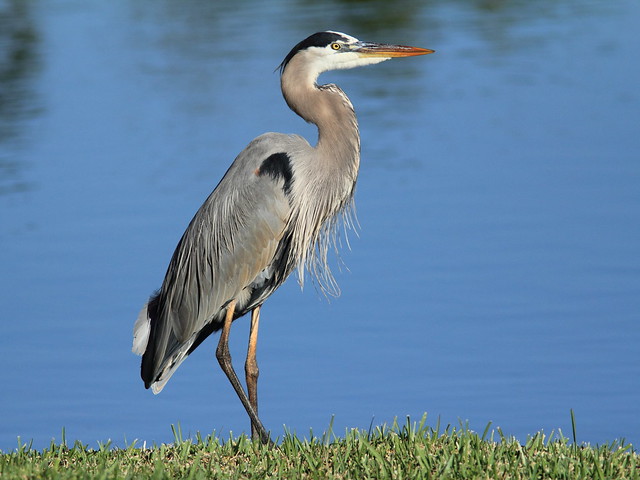
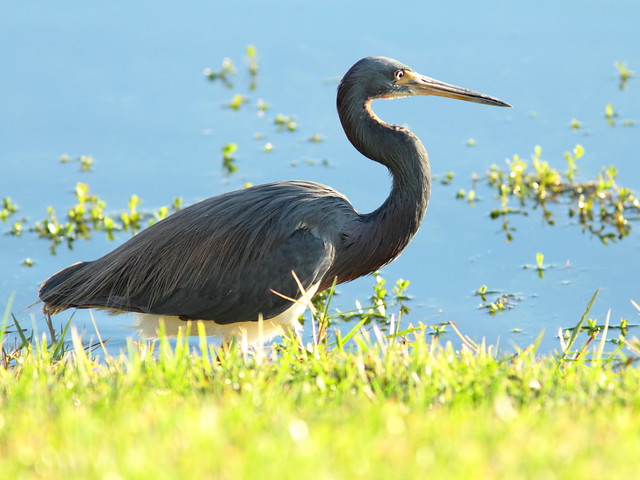
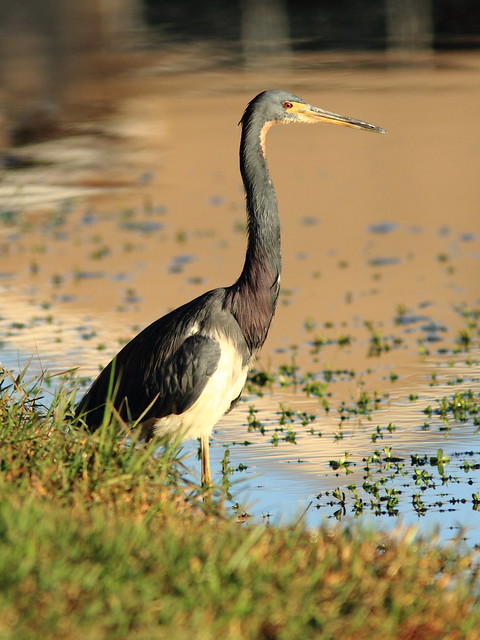
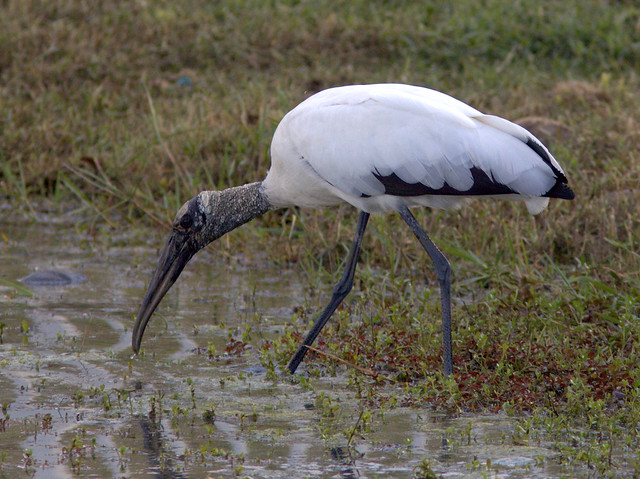
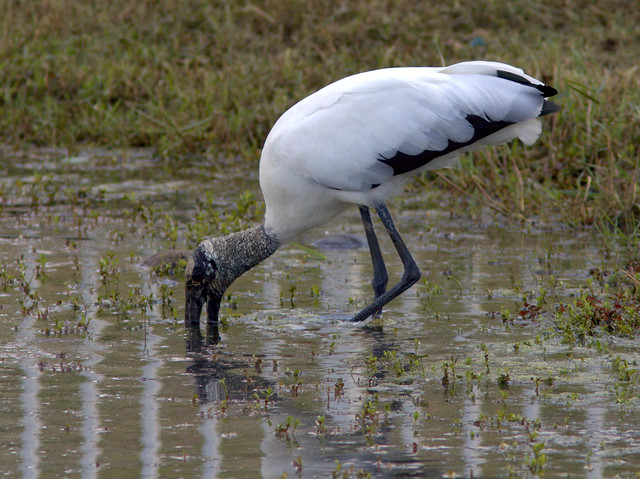
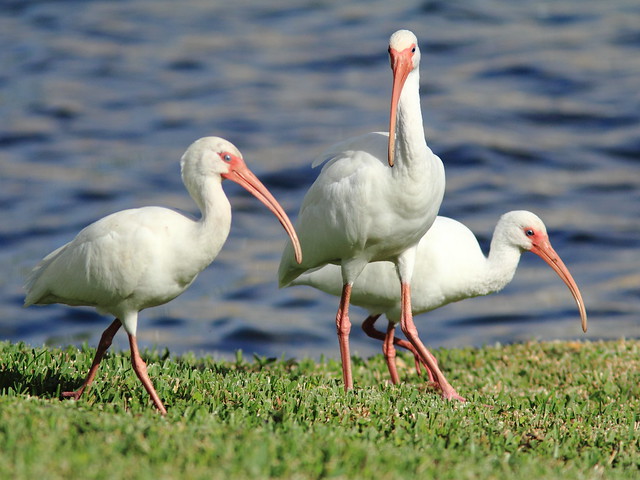
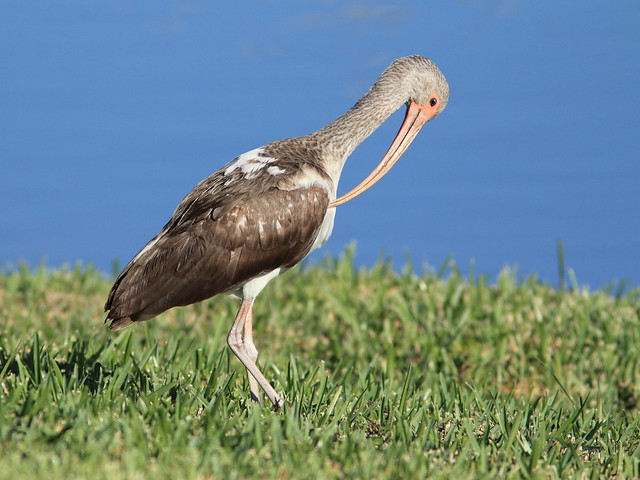
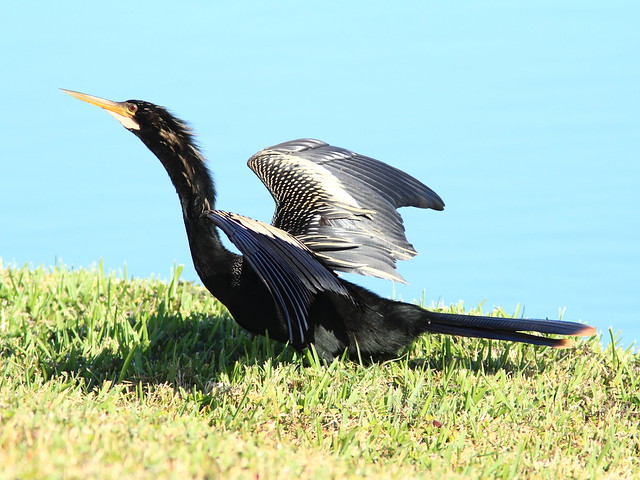

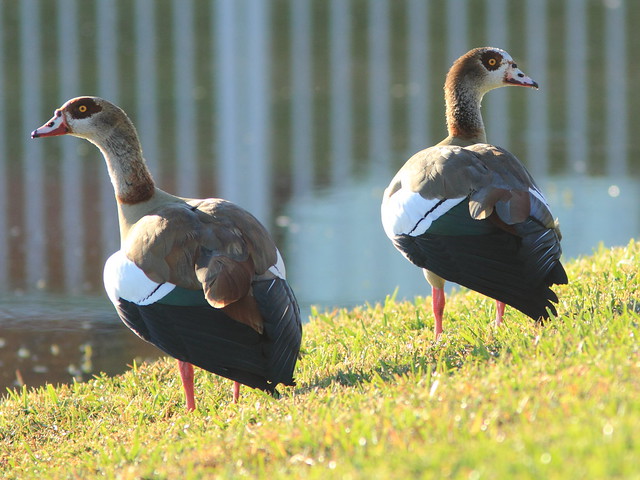
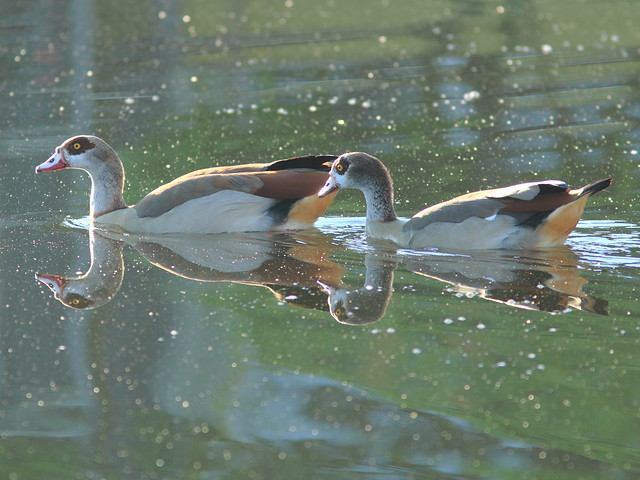

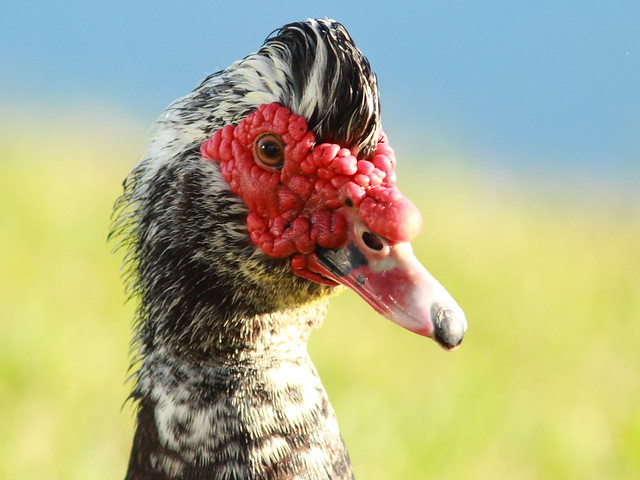

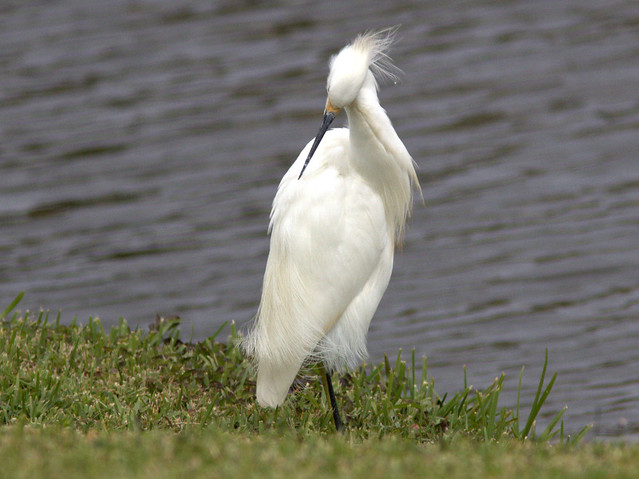
January 3rd, 2012 at 1:36 pm nice gift, the mono-pod and nice that you can spot the difference between using it and handheld. Great snapshots every one. Take care; I too picked up the cold-virus the week ahead of Christmas…
January 3rd, 2012 at 2:02 pm Wow! Gorgeous shots, Ken! Those herons are beautiful! Nice work on all of them!
January 3rd, 2012 at 2:23 pm Great series!! Boom & gary of the Vermilon River, Canada.
January 3rd, 2012 at 4:24 pm Beautiful birds and great photos. Sorry about your ‘cold’ woes! Take care! btw I have found similar results to what you describe with my monopod and long lens.
January 3rd, 2012 at 5:07 pm Ken, you have captured awesome birds. The photos are fantastic as usual. I love the wood stork and would love to see one some day. The Green Heron is one of my favorites. It is great that your girls were helping and spotting the birds for you. Thanks for sharing your post, I hope you are feeling better.
January 3rd, 2012 at 10:33 pm Wonderful photos. I really like #4. I use my monopod most all the time while on hikes. Beats lugging the Manfroto over hill and dale.
January 4th, 2012 at 4:30 am Your photos a beautiful and the new monopod seems to be working very well. My son suggested I get one as a tripod is rather too heavy for me to cart around. Love the reflection shot of the Egyptian geese.
January 4th, 2012 at 6:33 am Very good series!
January 4th, 2012 at 11:17 am Wow Ken, another fantastic selection of birds.
January 4th, 2012 at 11:51 am Awesome collection of backyard birds — so many beautiful species!
January 4th, 2012 at 12:58 pm I love all of your photos in this post! They are simply awesome!
January 5th, 2012 at 2:52 am WOW!! Great series of images. I love them all
January 5th, 2012 at 8:53 pm Truly a wonderful theme, the grand-kids looking after Grandpa’s interests! You know, it’s hard to imagine your pictures increasing in clarity very much, that is after all the hallmark of even your hand held shots, but darned if I can’t see the difference! It will be interesting to see the results in low light situations, like in morning bobcat strolls. I’ll bet that added stability will prove important to you. It is always a pleasure to view your divine camera work Ken, continued success in ‘12!
January 8th, 2012 at 10:17 am Amazing photography as always Ken. I am drawn to the vertical Tri-colored Heron shot with that complex background giving the bird a perfect backdrop for its multiple colors. The first Anhinga “take off” photo is splendid also. I long to see one of these birds. Here’s hoping that you heal quickly and have an excellent 2012. May you always have good light!
January 10th, 2012 at 9:37 pm Thanks all, for your comments and good wishes, so greatly appreciated. The house has fallen quiet without out little granddaughters around, and all the decorations are packed away. Time to catch up on my correspondence, as I discovered that my message filters have been sending quite a few of my incoming e-mails into a hidden folder. Somehow it happened when I started using my new Windows 7 computer over three months ago. Had to sift through over 3000 e-mails! Thankfully, they were mostly from commercial addresses and only a few required belated responses or action. Best wishes to all for a happy and prosperous new year! Ken